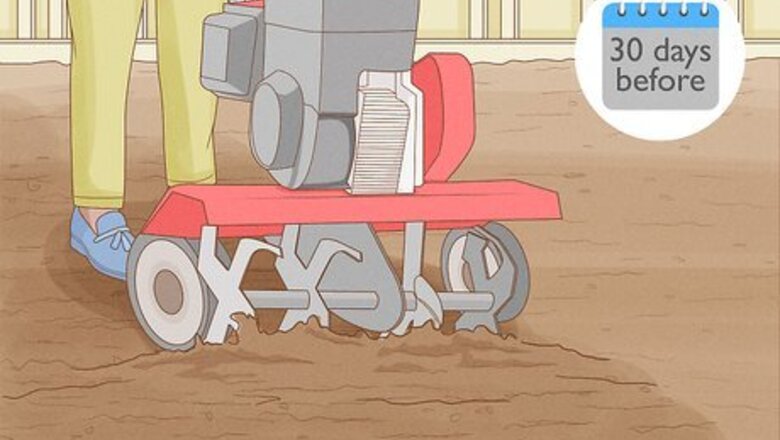
views
Till the soil before you plant.
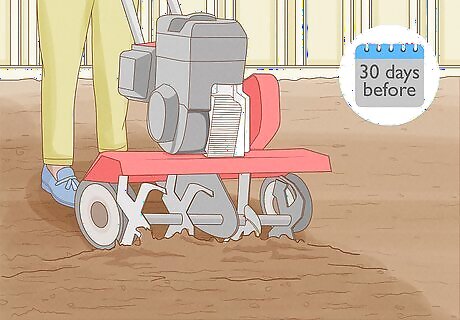
This helps disperse any pests in the soil. Use a hoe or a tiller to disturb the soil and mix up the top few layers of dirt. If there are any grasses or weeds growing in the area, pull those out first to avoid mixing the weed seeds in with your crops. Areas that used to be covered in turfgrass are very susceptible to pests, so it’s important to till them beforehand.
Vary the crops you plant together.
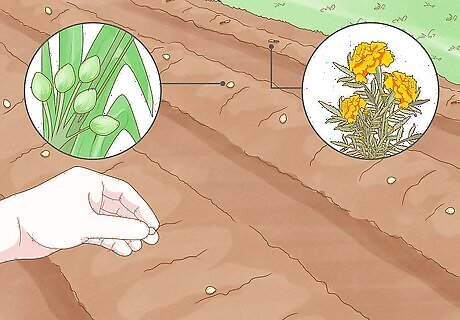
Huge rows of similar crops can attract insects. Instead of planting each crop in a straight line, try grouping a few different varieties up together, like herbs and veggies or tall plants and short plants. It will also slow the spread of diseases, so it’s a win-win!
Use plants as natural insect repellents.
Many herbs and flowers drive insects away on their own. Marigolds, chives, mint, basil, and cilantro can all help keep insects out of your vegetables. Plant these in and around your garden area to form a barrier that most bugs won’t want to cross.
Water your plants early in the morning.
Keep your plants fungus-free with a watering schedule. Plants are used to having dew cling to their leaves in the morning. Try to give your garden some water early in the day before the sun is high in the sky. Watering your plants late in the day when they’re sunning themselves can lead to fungus gnats, so try not to spray them down in the afternoon. When you water, point your hose or gardening can at the roots, not the leaves. Waterlogging the leaves of your plants can lead to rot and fungus, which attracts pests like slugs.
Use small amounts of fertilizer.
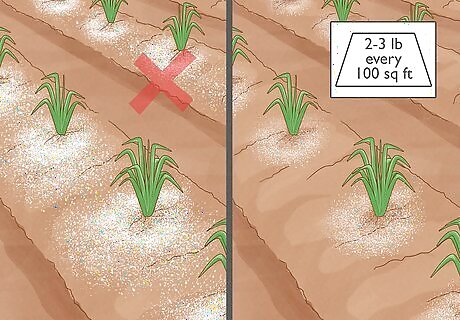
Adding too much fertilizer to the garden attracts insects. A good rule of thumb is to use 2 to 3 lb (0.91 to 1.36 kg) of fertilizer every 100 sq ft (9.2 sq m). Too much fertilizer can also kill your plants, so it’s better to go a little easy than to go overboard. If you’re using a granular fertilizer, you may need to reapply it every 6 to 8 weeks. If you’re using a slow-release fertilizer, 1 application is probably enough for the full growing season. If you aren’t sure which fertilizer you have, check the instructions on the back of the package.
Harvest plants as soon as they’re ripe.
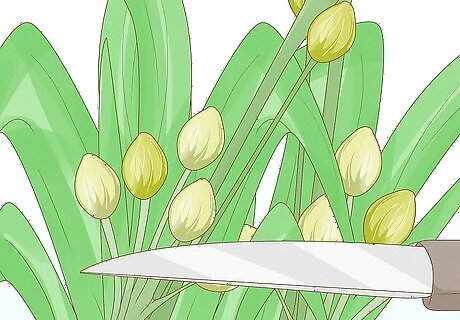
Ripe fruits and vegetables don’t stand a chance against insects. Keep a close eye on your garden throughout the growing season, and try to take your vegetation in as soon as possible. The quicker you get it out of the ground, the safer it will be from insects! Leaving fruit on the plant for too long can also lead to rot.
Cover plants with floating row covers.
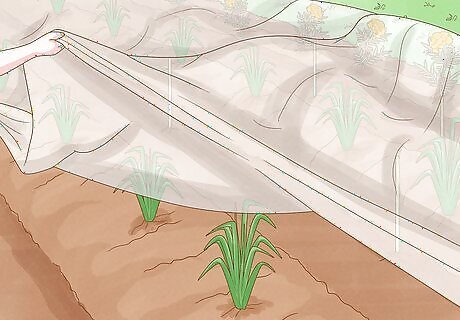
This small net makes it hard for insects to eat your plants. Buy a few floating row covers from your local garden supply store and pop them open. Place them over a row of crops, and use stakes if you need to keep them pushed upright. Sunlight and water will still be able to get in, but most pests will be stuck on the outside. These row covers also help deter larger pests, like birds and raccoons. Floating row covers are made of thin fabric with a very tight weave. If you can’t find floating row covers, use insect netting or cloches instead.
Wrap newspaper around fresh sprouts.
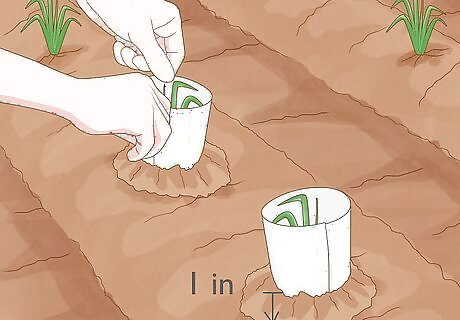
Protect your tender sprouts with physical barriers. If you’re transplanting starts into your garden or your seeds are starting to sprout, roll up a sheet of newspaper and tuck it in around your plant. Bury the bottom in at least 1 in (2.5 cm) of dirt so it doesn’t fly away in the wind. It won’t be an impenetrable solution, but bugs like cutworms will have a hard time getting to the plant itself. Newspaper won’t hold up well during the rain, so try this out for a summer garden when the weather is dry. When the plant gets too big for the newspaper, simply take it off and discard it.
Stake plants to keep their leaves off the ground.
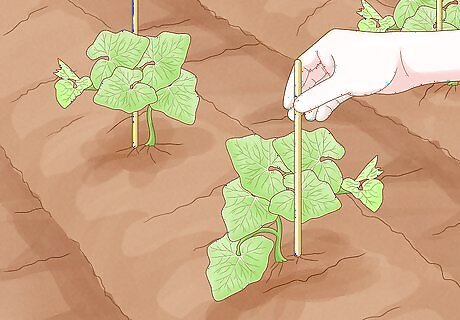
Any leaves touching the ground are more vulnerable to pests. If you have any droopy or viney plants, use wooden stakes to lift them up and off the soil. If you’re growing tall plants, like tomatoes, use metal cages to point them upright so they stay off the ground. Leaves on the ground are also more susceptible to disease and rot.
Pick off caterpillars when you notice them.
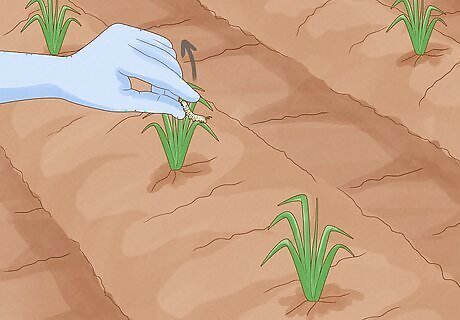
These large bugs are easy to spot and remove. Either relocate them to a new area that’s far away, or drown them in water mixed with dish soap. This works well if you have a smaller garden, but it might be a little labor intensive for large areas. Caterpillars are one of the most common garden pests, and they can do some serious damage to any leafy greens you have growing. If you see other pests on your plants, try simply spraying off the leaves with water.
Spray essential oils for a natural pesticide.
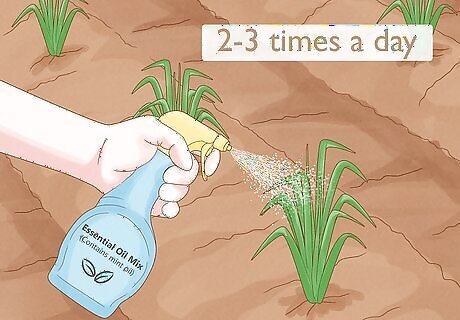
If smaller insects are your problem, essential oils are the way to go. Find an essential oil mix for the garden that contains peppermint or mint essential oil. Spray it on the leaves of your plants 2 to 3 times a day to keep bugs away without adding chemicals to your yard. You can also make your own peppermint essential oil spray by mixing 1 US gal (3.8 L) of water with 1 drop of dish soap and ⁄2 tsp (2.5 mL) of peppermint essential oil.
Use a neem oil spray for a natural pesticide.
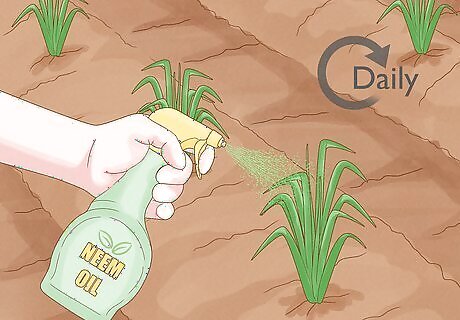
It’s very effective against most garden pests. You can find neem oil in over 100 pesticide sprays at your local garden supply store. Read the label on the back and spray the neem oil on your plants daily to keep bugs and garden pests away. Neem oil can be slightly irritating to the skin and eyes, so wear gloves and eye protection while using it.
Spritz insecticidal soap spray on your plants.
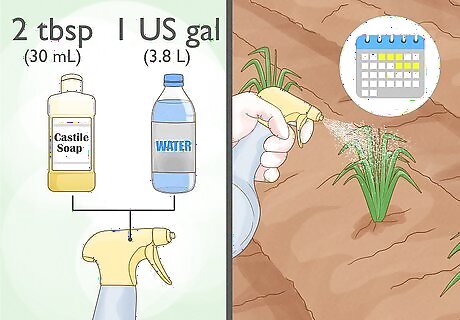
Insecticidal soap is an easy and natural way to get rid of bugs. Make a bottle of insecticidal soap by combining 2 tablespoons (30 mL) of castile soap with 1 US gal (3.8 L) of water. Pour your mixture into a spray bottle and spritz it onto the leaves of your garden every 2 or 3 days for at least 2 weeks. Try spraying your plants in the early morning before the sun comes out. That way, the soap has a chance to work before it dries. Check the underside of your plants, too—some small insects like to hang out on the bottom of leaves.
Spray Bt on your plants to kill pests.
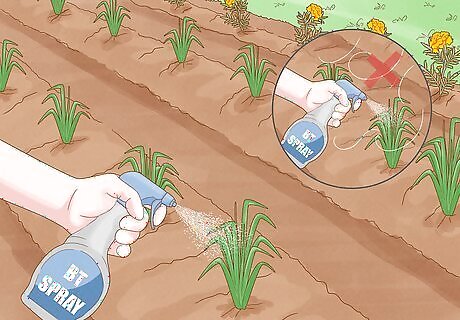
Bt is a bacteria that kills some insects, but doesn’t harm plants. If you have a big problem with caterpillars or other large insects, find a product that contains Bt and spray it on your plants. Follow the instructions on the label, and always wear gloves and eye protection to stay safe. Bt is very low in toxicity to humans, but it can cause skin irritation in high doses. Try not to apply it on a windy day to lower the risk of exposure. You can find Bt spray at most garden supply stores. Bt is effective against most garden pests, including earworms, caterpillars, aphids, beetles, and borers.




















Comments
0 comment